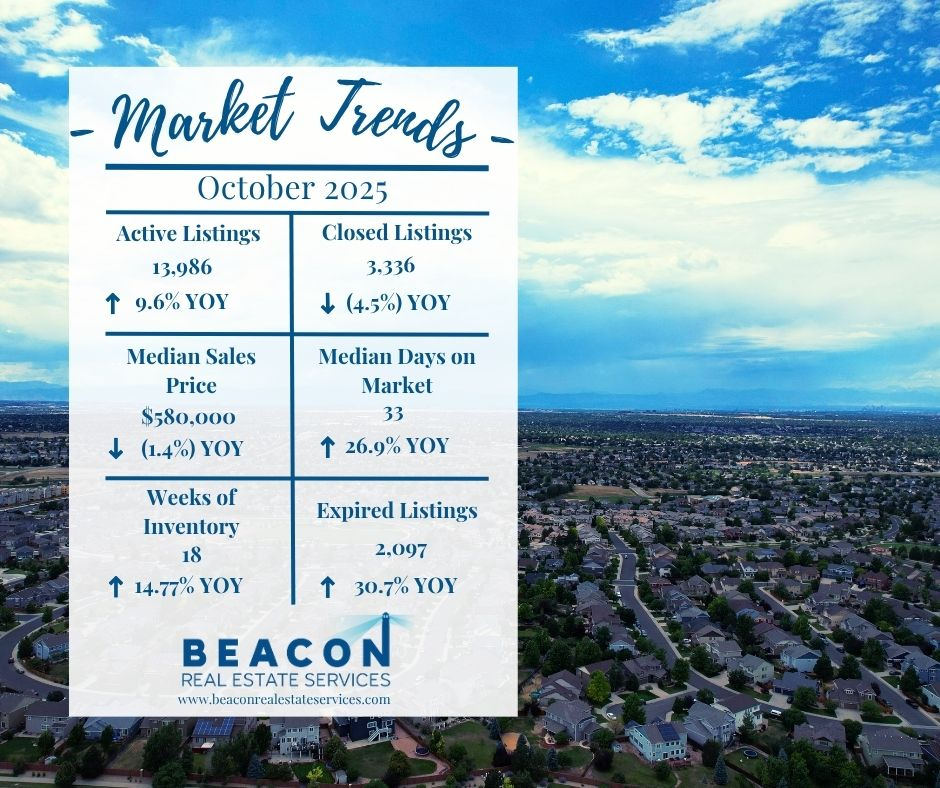
The Denver residential market is in a much different place than it was a few years ago. The market saw 2,097 listings expire (sellers giving up on selling) in October. This is 30.7% more than October 2024 and more than double the long-term average. The 10-year average for new listings in October is 5,189 but we saw only 4,890 new listings this October. Although this is lower than the average, the total number of listings has climbed to 13,986. Meanwhile, the 10-year average for closings in October is 4,467, and we had only 3,336 closings. This shows that buyer demand continually remains softer than average. The average 30-year mortgage rate, according to Freddie Mac, is 6.22%, which continues to subdue demand. Let's dive into the key market data for the Denver residential real estate market to understand what is happening with supply, demand, sales prices, and months of inventory for October 2025.
Supply
The total number of active listings at the end of October was 13,986. This continues the trend of historically high levels of inventory that has seemingly been transpiring since April of this year. Furthermore, the current inventory is up 9.6% compared to October 2024. The 10-year average for October active listings is 8,823, so we are significantly higher than that. The Denver market is experiencing a period of higher supply, and the seller's market appears to be history.
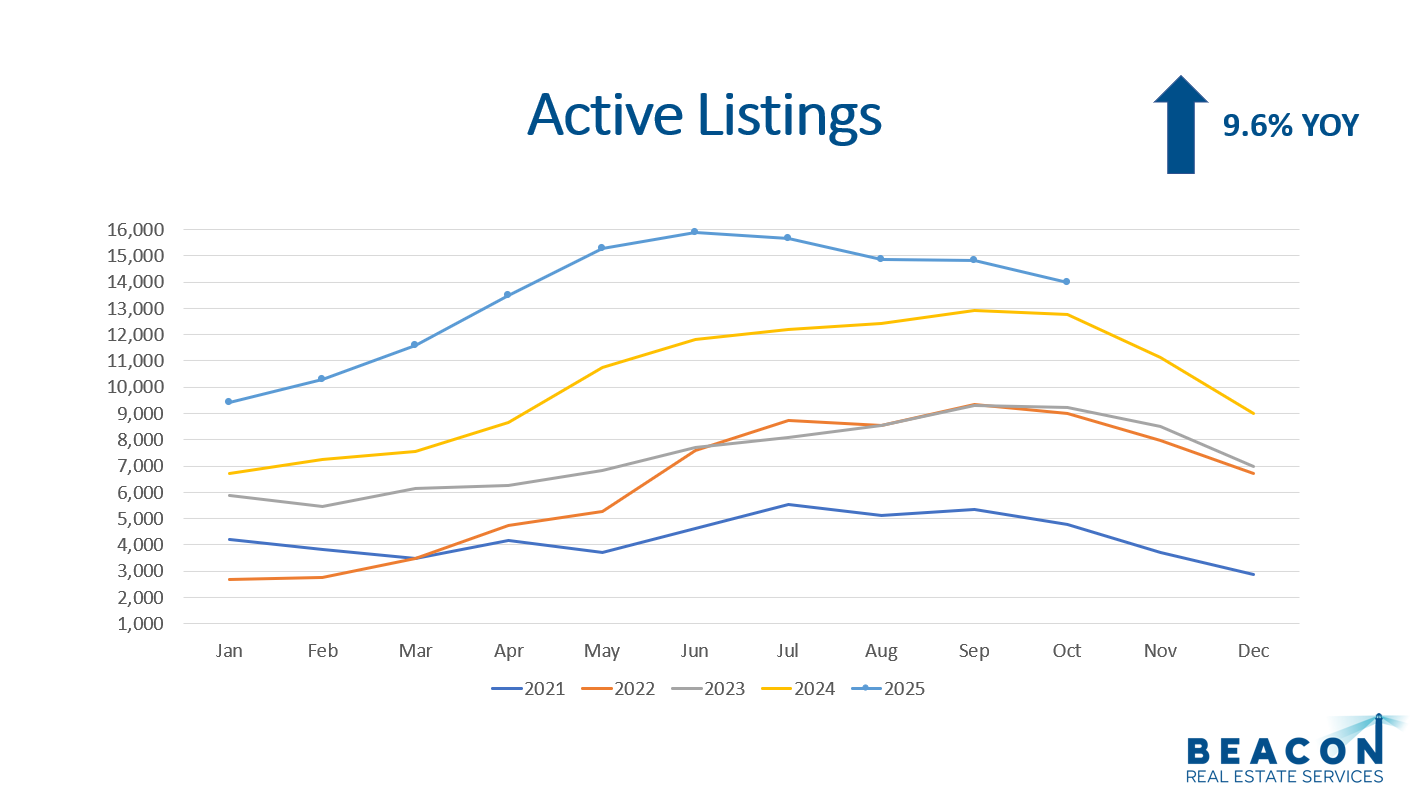
The most recent report for detached home construction is August 2025. The Denver Metropolitan Statistical Area (MSA) pulled permits on 485 homes. This is lower than the five-year average of 873 for August. The National Home Builders Association recently reported that 38% of builders surveyed are offering discounts.
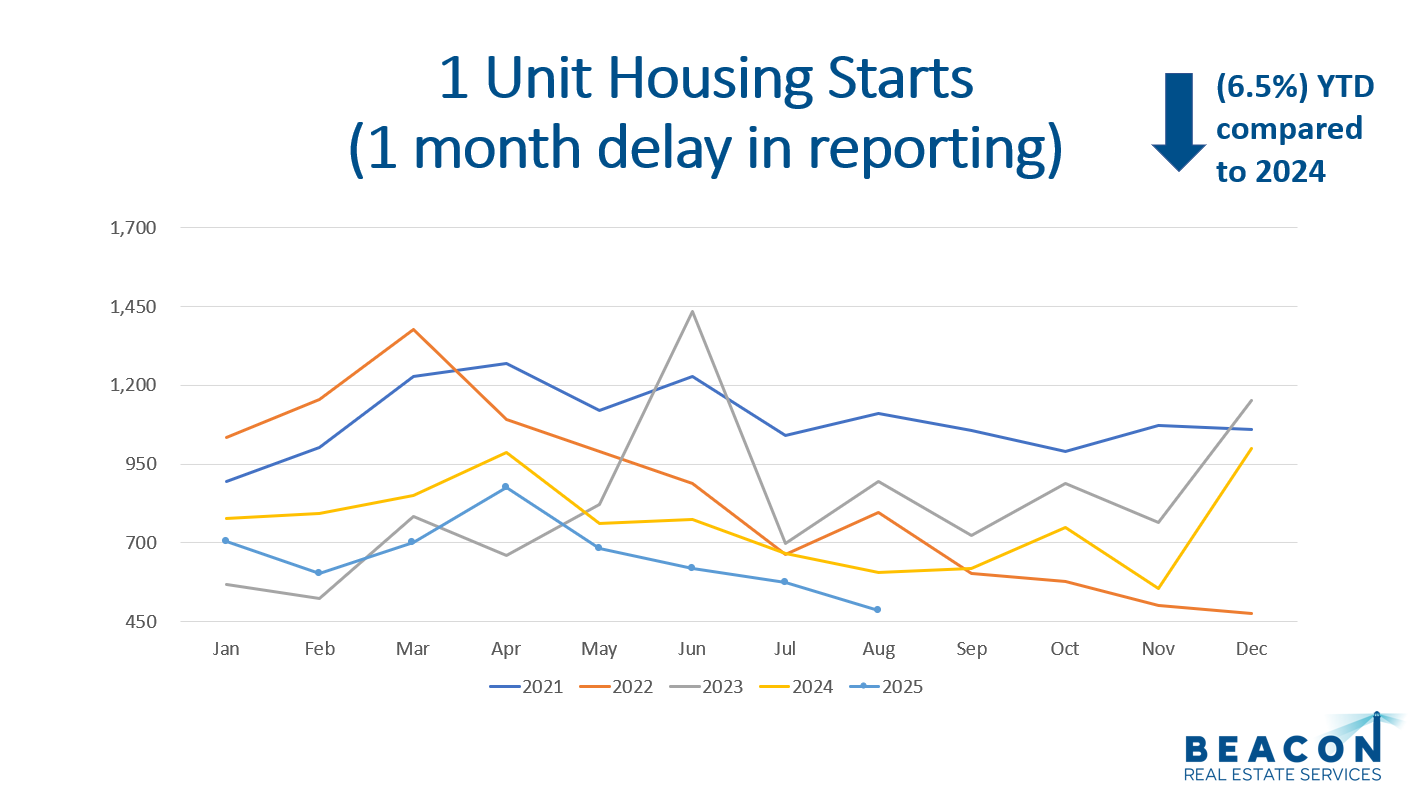
Overall, the market continues to have a surplus of supply and low demand. This is causing price stagflation and in some neighborhoods and product types, we are seeing values continually coming down.
Demand
Showings are a great leading indicator for demand in the residential real estate market. There were 49,172 showings booked through ShowingTime in the Denver Metro Area during October. This is up 0.5% compared to October 2024 and also up 1.6% compared to September 2025. The average number of showings for October over the last six years is 68,044, highlighting that demand is weaker than historical averages.
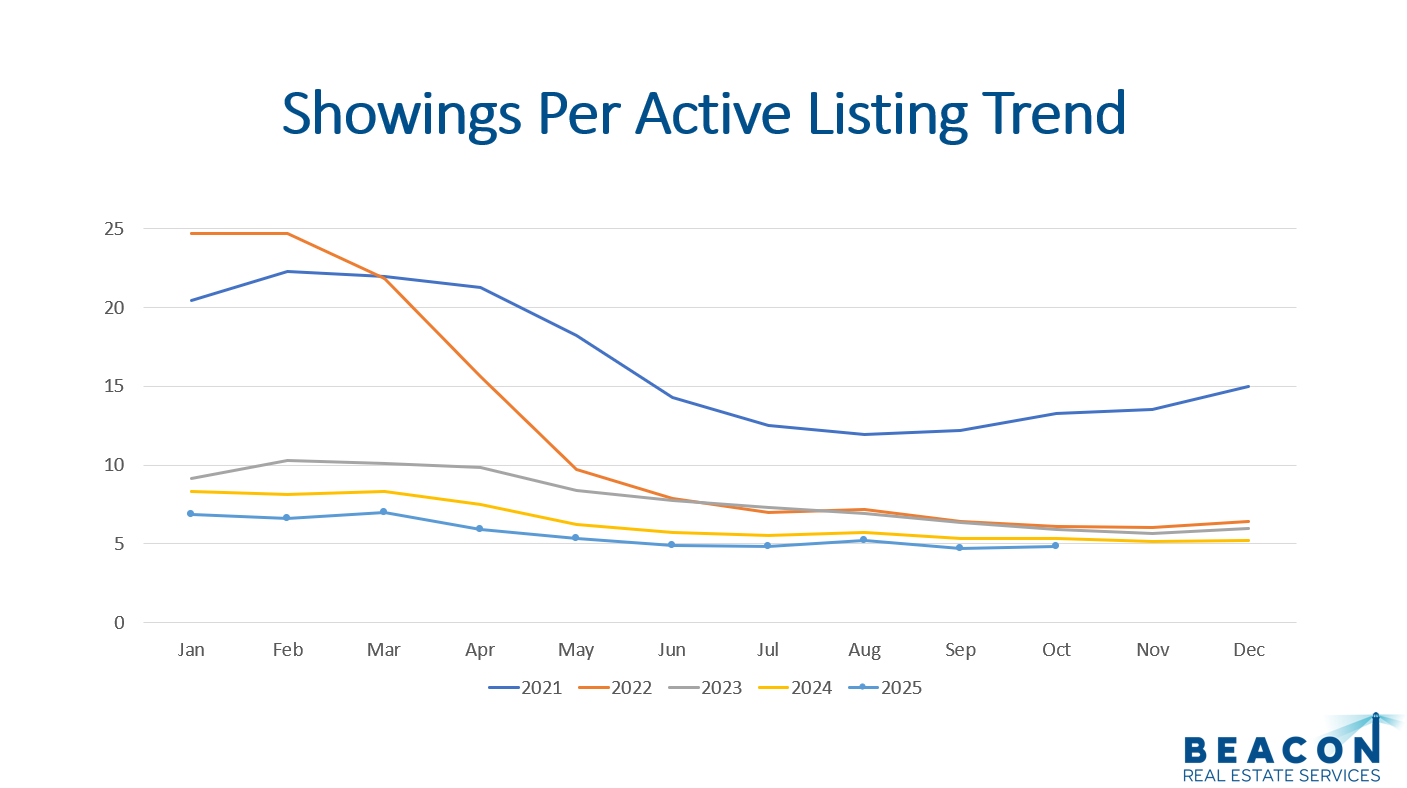
Denver had 3,297 properties go under contract during October 2025, which is up 2.5% compared to October 2024.
There were 3,336 closings in October 2025 compared to 3,492 in October 2024, reflecting a year-over-year decrease of (4.5%). When comparing this to September 2025, we happened to see a (2.8%) decrease.

The median days on the market for October decreased to 33 days from 36 days in September 2025. The median days on market will start to increase again as the older listings sell. In addition, marketing times go up during the winter with lower demand. The current list price-to-close price ratio continued to remain steady at 99.2%, indicating that sellers are generally receiving their asking prices. With that said, when we look at the original list price-to-close price ratio, we find a ratio of 96.6%. This means sellers are reducing their asking prices by 3.4% before they receive an offer that is 0.8% lower than their asking price. This means sellers are selling for 4.2% less than their original list price on average.
All in all, demand remains soft but steady. Interest rates have been trending lower but not fast enough to spur new demand. The trend for 2025 appears to follow what we saw in 2023 and 2024. The lower level of transaction volume is very close to what we saw in during the tail end of the financial crisis (2012).
Sales Prices
Long-term appreciation for Denver residential real estate averages around 6%, but current market conditions with higher prices, interest rates, and inventory are pushing some prices down. The current market continues to give buyers more options than it did during the COVID frenzy.
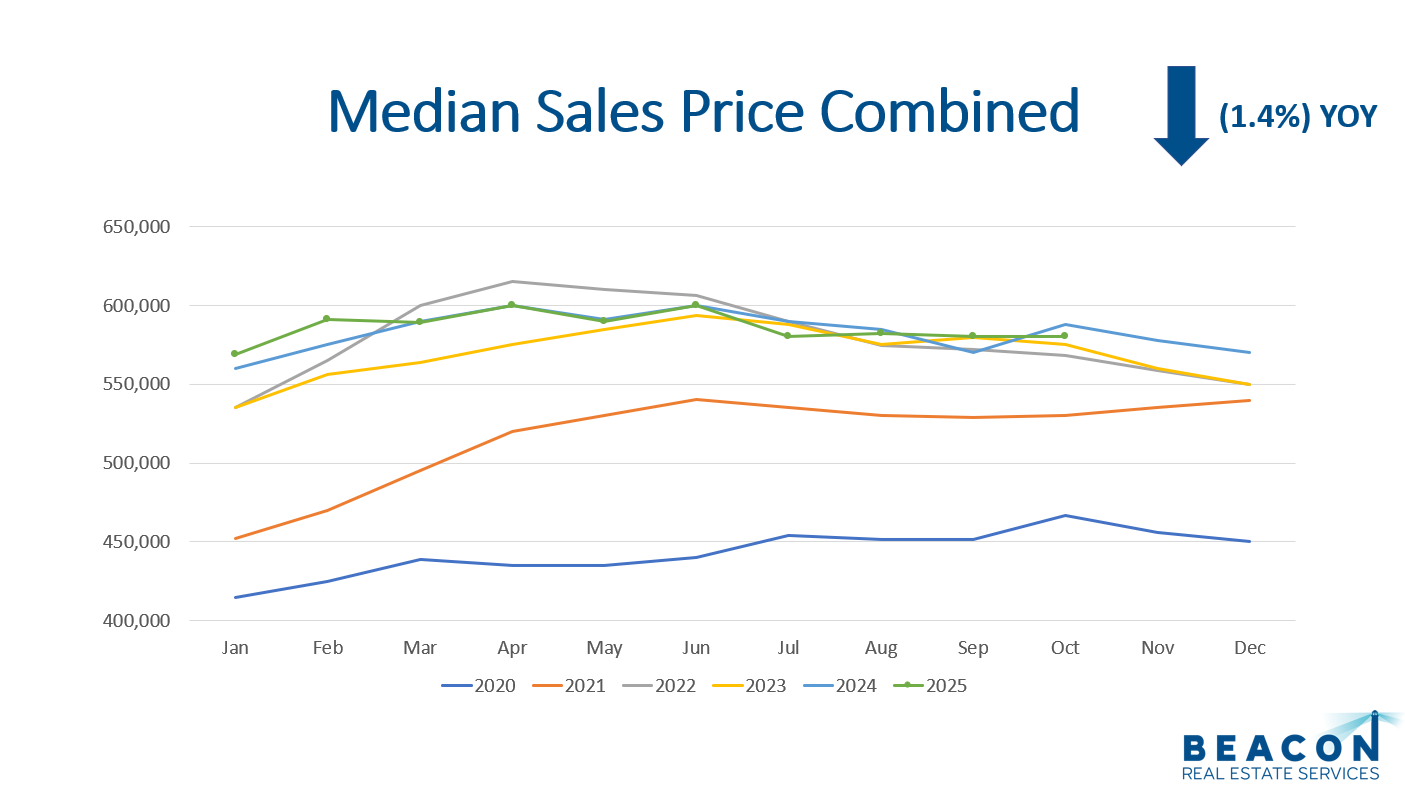
During October, the median sale price for attached and detached properties stayed the same from September at $580,000. However, this is down (1.4%) from a year ago. Condos are taking a hit. The median sales price was $382,000 in October, which is (4.3%) less than last year and (0.8%) less than last month in September.
Months of Inventory
The months of inventory metric is a great indicator to watch for market trends. A seller’s market typically has 0-3 months of inventory, a balanced market has 4-6 months, and 7+ months indicates a buyer’s market. With 13,986 listings on the market and 3,336 closings in October, we have 4.0 months of inventory. If we measured inventory in weeks, that would be 17.97 weeks. October 2024 had 15.66 weeks. This places the market in a balanced position, which often leads to stable pricing trends.
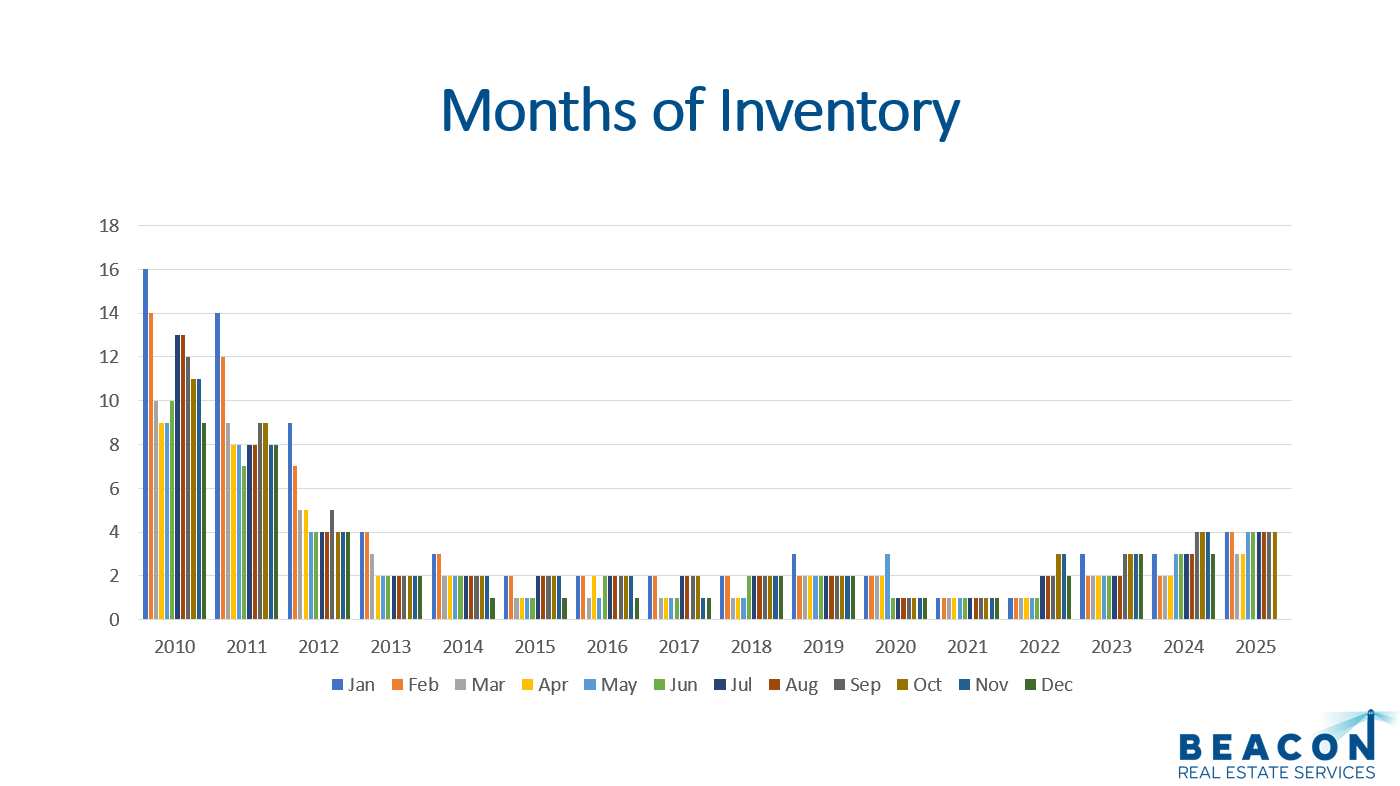
Final Thoughts
In summary, supply, demand, median sales price, and months of inventory are key metrics to watch for understanding market trends. Supply is higher than it has been in years, providing buyers with more choices. Demand, while steady, is softer compared to historical norms due to high prices and higher interest rates. The median sales price shows some softening, due to increased inventory and tempered demand. Lastly, months of inventory indicate a balanced market, continuing to set the stage for flat to moderate appreciation throughout 2025.
Here is a link to the full Market Presentation: